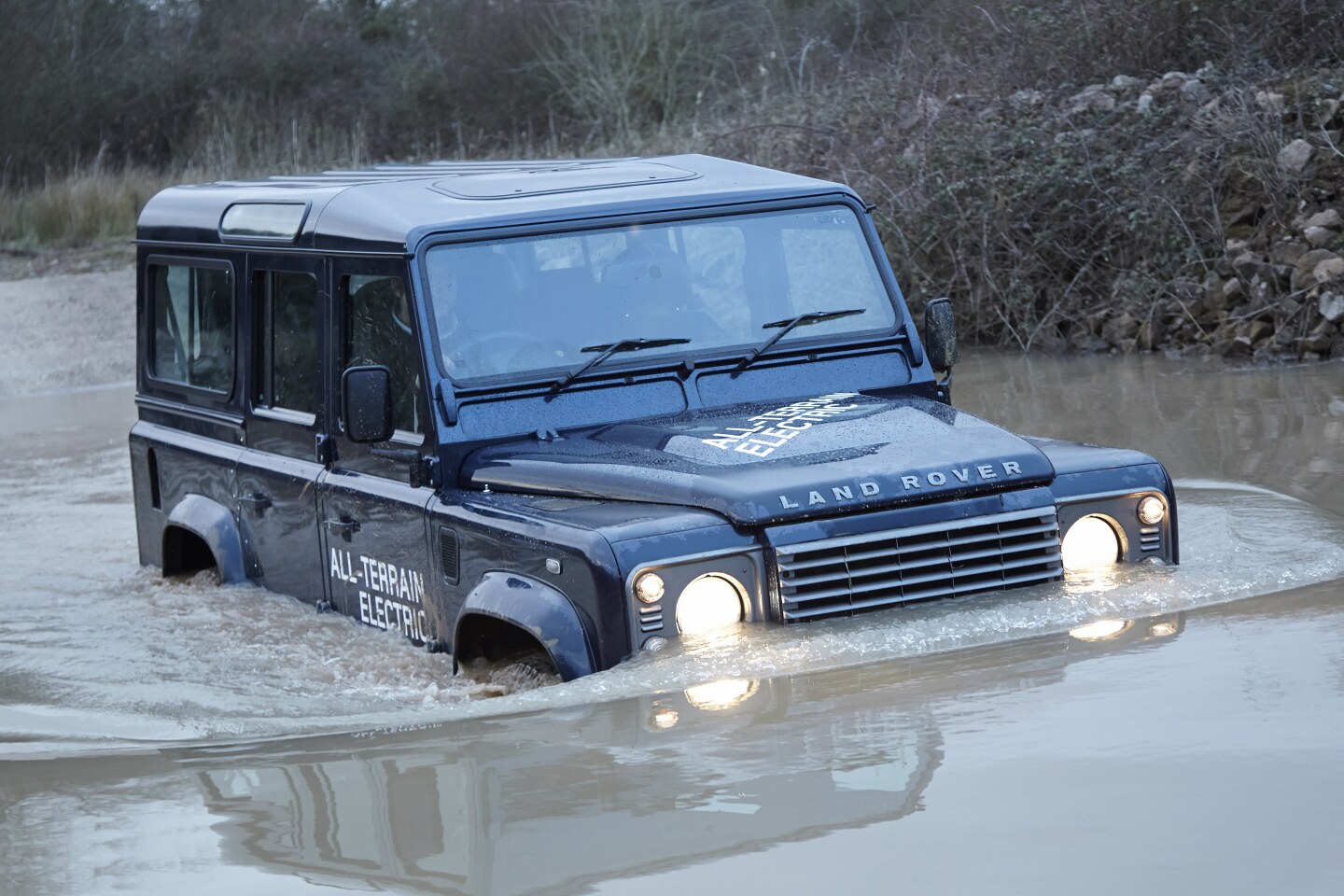As automotive electric technology advances and grows, we're seeing it move from small city cars to larger vehicles. Toyota and Tesla have both shown electric crossover models, and electric drivetrains are being swapped into existing vehicles like the Jeep Grand Cherokee. Now, Land Rover is preparing to show an electric update to the most unlikely of models ... the boxy, rugged Defender.
Until Land Rover replaces it with something lame like the DC100 concept, the Defender will continue to serve as the epitome of the brand's tough, no-compromise utility. Like a Jeep Wrangler or Toyota FJ Cruiser, the model's powerful, hard-lined build inspires daydreams of red-rock crawls and geysering stream crossings.
The square-cornered, 4,400-lb (2,000-kg) brute seems like a strange place to begin experimentation with electric driving. Land Rover, however, is interested in tinkering around with potential off-road applications of electric technology. So the Defender is a natural place to start, not to mention an interesting headline for the company. Land Rover says that the electric version still has "tough, go-anwhere capability," just delivered in a zero-local-emissions package.
"This project is acting as a rolling laboratory for Land Rover to assess electric vehicles, even in the most arduous all-terrain conditions," said Antony Harper, Jaguar Land Rover Head of Research. "It gives us a chance to evolve and test some of the technologies that may one day be introduced into future Land Rover models."
The company will showcase a series of seven electric Defender 110 vehicles at the Geneva Motor Show. The "one day" that Harper mentions won't be in the near future, as Land Rover admits outright that it has no production plans for the Defender research vehicles. It will, however, test the electric off-roaders in real world trials later this year.
Land Rover leaves the typical diesel engine and transmission on the factory floor, making room for a 90-bhp (70 kW) electric motor and 27 kWh battery pack. Instead of using two electric motors, as all-wheel-drive electrics tend to do, Land Rover routes power through the Defender's usual four-wheel-drive system. It also uses a single-speed 2.7:1 reduction gearbox and a modified version of Land Rover's Terrain Response System. The e-Defender includes the usual differential lock for extra traction in slick, rigorous off-road situations.
With a 900-pound (410 kg) battery pack to lug around, the electric Defender is bound to be heavier than the ICE version. Land Rover uses air cooling rather than liquid cooling to help save weight, making an electric version that weighs just 220 pounds (100 kg) more than the standard Defender 110.
The battery can be charged in four hours using a 7 kWh fast charger or 10 hours with a 3 kWh charger. Land Rover also optimized the regenerative braking system. When used with the Hill Descent Control, the motor can generate 30 kW of electricity.

Land Rover says that the electric Defender offers some serious utility off the pavement, with the electric powertrain's low-speed capabilities well-suited to climbing obstacles. Trials of the Defender-based Leopard 1 electric proved that it could pull a 13.2-ton (12-tonne) road train up a 13 percent grade and wade through more than 2.5 feet (800 mm) of water.
While Land Rover's EV experiment is interesting, it's unlikely to result in an off-road-capable electric anytime soon. Up until battery capacity and EV design improve markedly, electric powertrains and off-roading will make strange bedfellows unlikely to yield a practical production-ready vehicle. If range anxiety is a problem on highways, it's exponentially larger on dirt and rock roads far away from civilization. Even gas 4x4ers tend to carry around a fuel can to prevent getting stranded in nowhereland. EVs will need to offer many times that 50-mile (80-km) range before they start hitting 4x4 roads in any meaningful way.
Source: Land Rover






















